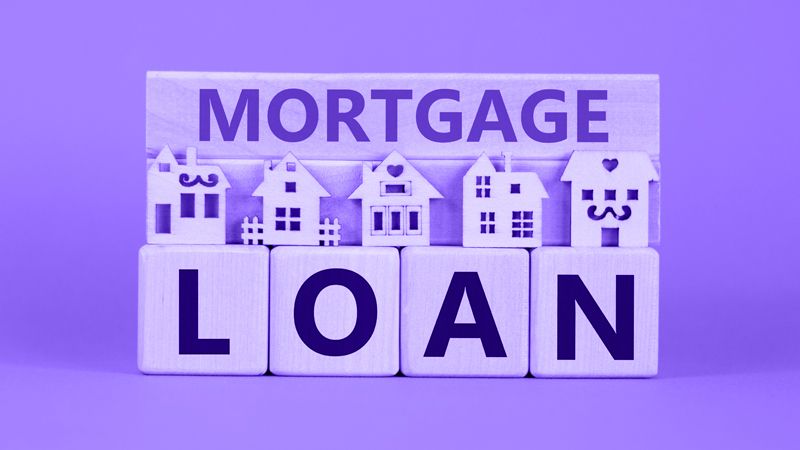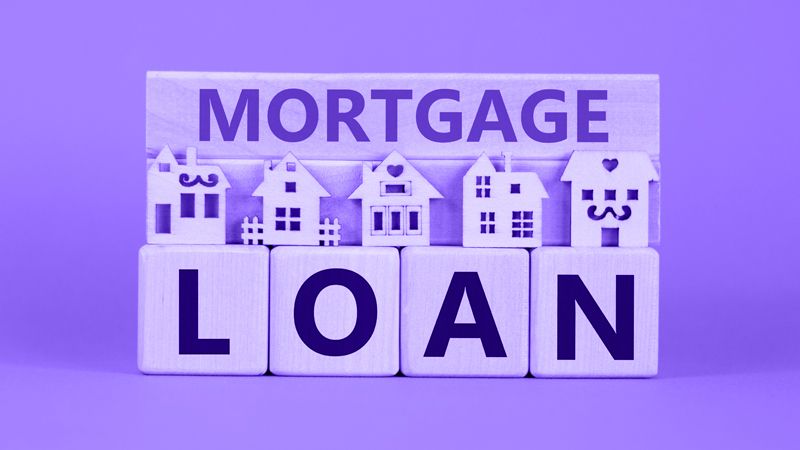Secured Loans: What You Need to Know [2025 Guide]


Need to borrow larger amounts than traditional loans allow? Struggling to get approved with less-than-perfect credit?
Secured loans let you access bigger sums by using your assets as security. Your home or valuable possessions become the lender’s safety net – which means you could potentially borrow more money because you’re providing this collateral.
But here’s what you must understand: your asset could be taken if you don’t pay your loan back.
Why Consider Secured Loans?
The numbers tell the story. Secured loans often go up to £100,000 or higher, whereas personal loans typically don’t exceed £25,000. This makes them particularly attractive when you need substantial funding. They’re also generally easier to get approved for if you have poor credit or limited credit history.
Your home or other valuable possessions become the key to accessing these larger amounts. This arrangement creates opportunities – but also serious responsibilities.
This guide will walk you through everything about secured loans so you can make an informed decision. We’ll cover how they work, their advantages and disadvantages, and when they might be right for your financial situation.
What is a secured loan and how does it work?
Secured Loans Explained.
A secured loan creates a direct link between the money you borrow and something valuable you own. Your assets become the lender’s safety net – fundamentally different from standard personal loans.
Definition of a secured loan
The principle is straightforward: lenders provide money knowing they can claim specific property if repayment stops. Your assets become their guarantee.
This arrangement changes everything for financial institutions. With valuable collateral as protection, lenders offer more favorable terms than unsecured alternatives. You’ll typically see longer repayment periods, making monthly payments more manageable despite larger loan amounts.
The lending institution places a lien against your collateral during the loan term. This legal mechanism gives them the right to take possession of your property should you default on payments. Secured loans offer advantages, but introduce significant risks to borrowers.
How collateral is used
Your collateral provides tangible security for the lender. Pledge an asset, and you’re reducing their financial exposure. This security enables them to offer lower interest rates than unsecured loans.
The value of your collateral directly impacts how much you can borrow.
Home equity loans demonstrate this. Lenders calculate your borrowing capacity based on equity – the difference between your property’s current value and outstanding mortgage balance. Home worth £300,000 with £200,000 remaining on your mortgage? You have £100,000 equity.
Lenders impose caps on borrowing to prevent negative equity situations, where you might owe more than your assets are worth. During the application process, they’ll assess your collateral’s fair market value through formal appraisals or valuations.
Default on repayments? The lender can legally seize and sell the collateral to recover their funds. For mortgages, this process is foreclosure. This potential outcome represents the primary risk for borrowers considering secured financing.
Common types of secured loans
Mortgages – The most familiar secured loan, using the purchased property as collateral for home buying
Home equity loans/HELOCs – Borrow against accumulated home equity, often for major expenses like renovations
Vehicle loans – Finance cars, boats, or motorcycles using the vehicle itself as security
Secured personal loans – General-purpose borrowing backed by savings or personal property
Secured credit cards – Revolving credit lines backed by cash deposits, primarily designed for credit building
Other options include life insurance loans (against policy cash value), car title loans, share-secured loans (against savings accounts or CDs), and pawnshop loans for short-term needs.
Companies can obtain secured financing using commercial properties, business vehicles, or other company assets as collateral.
Secured loans work particularly well for home purchases, major renovations, debt consolidation, and rebuilding credit after financial difficulties.
Mortgageable offers a free Equifax Credit Report as part of its service, with no obligation to proceed. Something worth considering.
Secured vs Unsecured Loans: Key Differences
Two distinct borrowing paths await you. Understanding these differences helps you make better financial decisions.
What Makes a Loan Unsecured?
Unsecured loans don’t require collateral as backing. This fundamental difference means the lender has no immediate claim to any of your assets if you fail to repay. Instead, lenders rely heavily on your creditworthiness, financial stability, and credit history to determine whether to approve your application.
Common unsecured options include:
- Personal loans for various purposes
- Credit cards with revolving credit lines
- Student loans for education financing
- Overdrafts from banking institutions
Approval for unsecured loans typically requires a minimum credit score of 580, with scores of 700 or higher needed to secure favorable interest rates. This stricter credit requirement exists because lenders take on greater risk without the safety net of collateral.
Risk and Reward Comparison
The numbers reveal the trade-offs:
For Secured Loans: You’ll typically enjoy lower interest rates than with unsecured alternatives. Moreover, secured financing often allows for higher borrowing amounts and extended repayment terms, sometimes up to 40 years for mortgages, resulting in lower monthly payments.
For Unsecured Loans: Interest rates tend to be higher to compensate lenders for increased risk. Additionally, loan amounts are usually smaller, starting from around £1,000, with shorter repayment periods.
For lenders, unsecured loans represent higher risk, as they have limited recourse if borrowers default. Rather than seizing property, they must pursue other avenues such as hiring collection agencies or taking legal action through the courts.
When to Choose One Over the Other
Your specific financial situation should guide your choice.
Consider a Secured Loan When:
- You need to borrow larger sums for major purchases
- You have valuable assets to offer as collateral
- You qualify for better interest rates due to the reduced lender risk
- You have a less-than-perfect credit history that might prevent unsecured loan approval
Opt for an Unsecured Loan When:
- You don’t want to risk losing valuable assets
- You need funds quickly without property appraisals or verification processes
- You’re borrowing smaller amounts for short-term needs
- You have strong credit and qualify for competitive rates
The decision ultimately balances risk tolerance against financial needs. Although secured loans might save money through lower interest rates, you must honestly assess whether you can maintain payments consistently throughout the loan term. Even though unsecured loans don’t put your assets directly at risk, they still impact your credit score if payments are missed.
Remember that some borrowing purposes naturally align with specific loan types—mortgages are almost always secured against the property being purchased, yet personal expenses or debt consolidation might be better suited to unsecured financing.
Pros and cons of secured loans
Secured borrowing offers attractive features alongside serious risks. Understanding both sides helps you make the right choice for your situation.
Access Higher Amounts.
Longer Terms.
The appeal is clear: you can borrow substantially more than unsecured alternatives allow. Personal loans cap at £25,000, while secured loans offer up to £100,000 or more. This makes them particularly valuable for major expenses like home renovations or education costs.
Extended repayment periods make monthly payments more manageable. Terms stretch to 25, 30, or even 35 years – significantly longer than the typical 7-10 year maximum for unsecured loans.
Consider this: borrowing £40,000 at 4% interest over 8 years requires monthly payments around £485. Extend to 16 years, and this drops to approximately £280 monthly.
Secured loans also offer hope for those with imperfect credit histories. Lenders approve applications from borrowers with poor credit scores because they have collateral as protection.
Risk Your Asset.
Face The Consequences.
The most significant downside cannot be overstated: your collateral could be taken if you fall behind on payments. The lender has legal rights to repossess your property to recover their funds. Your home, vehicle, or other valuable assets could be seized if you fail to make repayments.
The default triggers additional consequences. Lenders might:
- Take you to court to recover the debt
- Report missed payments to credit bureaus, damaging your credit score
- Engage debt collectors to reclaim the owed amount
Secured loans involve lengthier application processes, too. Lenders require detailed assessments and appraisals of your assets before approving your application.
Count The Real Cost.
Lower monthly payments come with a catch: spreading repayments over longer periods substantially increases total interest paid. This creates a critical trade-off between monthly affordability and overall cost.
Borrowing £40,000 at varying terms shows the real impact:
- 10 years at 7%: £460 monthly, total repayable £55,201 (interest cost: £15,201)
- 15 years at 5%: £314 monthly, total repayable £56,521 (interest cost: £16,521)
- 25 years at 3.5%: £199 monthly, total repayable £59,721 (interest cost: £19,721)
The longer term reduces monthly payments significantly but costs £4,520 more overall. Some secured loans feature variable interest rates too, potentially increasing your repayments if rates rise.
Secured loans represent a compromise: accessibility and affordability at the expense of risk and potentially higher lifetime costs. Evaluate your financial stability and repayment capabilities before proceeding.

What to consider before applying for a secured loan
Ready to apply? Not so fast.
Before signing any agreement, you need to assess several critical factors that will affect both your borrowing experience and financial future.
Your financial stability
First, honestly evaluate your income stability and employment security. Lenders want to see that you have a reliable income stream to support monthly repayments. Consider future expenses too, including major life changes like starting a family or buying a home that might impact your ability to pay.
Maintain an emergency fund to cover unexpected costs such as home repairs, car issues, or health emergencies. Remember, your property may be repossessed if you fail to keep up with repayments; therefore, financial stability isn’t just important—it’s essential for protecting your assets.
Loan-to-value ratio explained
The loan-to-value (LTV) ratio represents the percentage of your property’s value that you’re borrowing against.
Calculate it simply: divide your loan amount by your property’s value and multiply by 100. Borrowing £150,000 against a £200,000 property gives an LTV of 75%. Most lenders offer their best interest rates when the LTV ratio is at or below 80%.
The amount of equity in your home—the difference between your property’s value and outstanding mortgage—affects how much you can borrow. With a £350,000 property and £150,000 remaining on your mortgage, you could potentially borrow up to £66,000 at an LTV of 62%.
Interest rates and fees
Interest rates on secured loans vary based on your credit history, LTV ratio, and loan term. Some secured loans have variable interest rates that can increase or decrease over time, potentially affecting your monthly payments.
Watch out for additional costs. Arrangement fees (£300-£995), valuation fees, and broker fees contribute to the total cost. Use the Annual Percentage Rate for Comparison (APRC) when comparing different loan offers, as it includes both interest rates and mandatory fees.
How much can you afford to repay
Calculate what you can comfortably repay monthly, factoring in your existing debt obligations.
Consider that shorter loan terms mean lower overall interest but higher monthly payments. Borrowing £10,000 over three years at 10% interest costs £322 monthly (total interest: £1,600), whereas spreading it over ten years reduces payments to £132 monthly but increases total interest to £5,850.
The rule? Borrow just the minimum you need over the shortest affordable term to keep costs down.
Related quick help guides:
Managing your secured loan responsibly
Protect your assets. Maintain your financial health. Proper management of your secured loan is crucial from day one.
Setting up automatic payments
Set up automatic payments through Direct Debit. This simple step ensures your loan payments are always made on time, helping you avoid missed payments, late fees, and potential damage to your credit score. Many lenders even offer small interest rate discounts for using autopay.
Always maintain sufficient funds in your account to cover scheduled payments. This avoids non-sufficient fund fees and returned payment charges.
What happens if you miss a payment
Missing payments triggers serious consequences. Lenders typically charge late payment fees (around £25) for missed payments. After missing two monthly payments, you’ll likely receive a notice of arrears letter outlining how much you owe.
Further missed payments lead to a default notice, giving you approximately 14 days to catch up. If unresolved, a default will be registered on your credit file, potentially reducing your score by around 350 points and remaining there for six years.
How to avoid repossession
Create a detailed budget to identify potential savings for loan payments. Contact your lender immediately if you’re struggling—they may offer breathing space, payment holidays, or reduced payment plans.
Need additional support? Organisations like Citizens Advice and StepChange provide free debt counseling. Remember that repossession is typically a last resort after multiple missed payments and formal notices.
Can you repay early?
Yes, you can repay secured loans early, potentially saving on interest. Lenders must allow early settlement, though some charge early repayment fees (typically 1-5% of the outstanding balance).
Some lenders, like HSBC, allow you to repay all or part of your loan with no early repayment charge. Early repayment can improve your financial position by reducing total interest and freeing up your asset from the lender’s claim.
Conclusion
Secured loans unlock larger borrowing amounts when traditional options fall short. Using your assets as collateral delivers lower interest rates and extended repayment terms. But this convenience comes with serious responsibilities.
Your home or valuable possessions stand at stake when you choose secured borrowing. Careful assessment of your financial stability must come first. The loan-to-value ratio, interest rates, and your realistic repayment capacity deserve thorough consideration before signing any agreement.
Financial stability remains essential. Without consistent income and emergency savings, you might face asset repossession. Remember: longer repayment terms reduce monthly payments but increase total interest paid.
Set up automatic payments and maintain open communication with your lender. This protects both your assets and credit score.
Take time to evaluate all available options. Determine whether the benefits truly outweigh the potential drawbacks for your specific situation. The right borrowing decision aligns with your long-term financial goals rather than just meeting immediate needs.
Secured loans provide valuable opportunities when used wisely. They require commitment and understanding of the associated risks. Your assets deserve that level of care and consideration.
Key Takeaways
Understanding secured loans is essential before putting your assets at risk for borrowing. Here are the critical insights every potential borrower should know:
• Secured loans use your assets as collateral, allowing you to borrow up to £100,000+ with lower interest rates, but your property could be repossessed if you default on payments.
• Calculate your loan-to-value ratio carefully – borrowing against 80% or less of your property’s value typically secures the best interest rates and terms.
• Longer repayment terms reduce monthly payments but significantly increase total interest costs – a £40,000 loan over 25 years costs £4,520 more than over 10 years.
• Financial stability is non-negotiable – maintain steady income and emergency savings before applying, as missed payments can lead to asset loss and credit damage.
• Set up automatic payments immediately to avoid late fees and potential repossession, and contact your lender early if you experience payment difficulties.
The key to successful secured borrowing lies in an honest assessment of your repayment capacity and choosing the shortest affordable term. While secured loans offer access to larger amounts at better rates, they fundamentally put your most valuable assets at risk, making responsible management absolutely critical for protecting your financial future.















